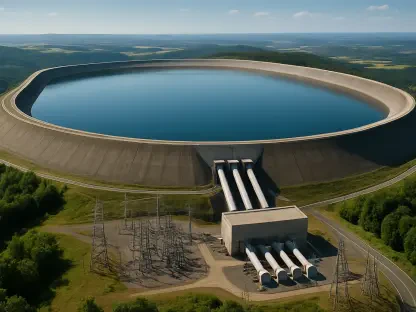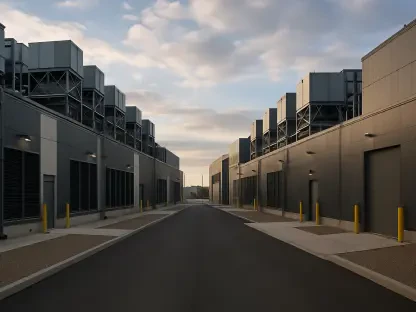In the wake of the recent Eaton and Palisades wildfires, which struck California in January, environmental safety measures have come under scrutiny. With over 13,500 properties damaged or destroyed and numerous fatalities reported, these events rank among the most devastating on record for the state. While federal and local agencies focus on extensive cleanup efforts, questions linger regarding the adequacy of measures to eliminate residual contamination and protect public health. As hazardous debris removal progresses, the incorporation of comprehensive soil testing becomes a pressing issue, highlighting the need for addressing potential risks that could affect both human health and the surrounding environment.
The Cleanup Process and Current Practices
Coordinated Efforts and Hazardous Waste Removal
The cleanup following the Eaton and Palisades wildfires has been characterized by concerted efforts involving federal and local entities working together to manage hazardous waste. Toxic debris, including ash and remnants of unstable structures, requires careful removal to enable safe rebuilding. Agencies such as the EPA, FEMA, and the US Army Corps of Engineers are involved in this complex process. Phase I of the cleanup is conducted by EPA’s crews, targeting hazardous household materials along with bulk asbestos. Phase II shifts focus to fire ash and debris removal from the upper layers of soil beneath burned structures, taking place under FEMA’s guidance and expected to unfold over a year.
These efforts span multiple counties, including Los Angeles, Kings, and Orange, which have obtained special emergency approvals to accept debris at designated landfills. Despite the significant progress made in debris removal, concerns persist about the adequacy of soil testing. While FEMA suggests that removing the upper soil layer is sufficient to address fire-related contamination, the absence of further soil testing has raised alarms among environmental experts. This has sparked ongoing discussions about ensuring safety and preventing potential health risks that might not have been completely mitigated by current debris-clearing efforts.
Implications of Relaxed Regulations
California’s bid to expedite rebuilding has led to a relaxation of certain environmental regulations, adding another layer of complexity to post-wildfire consequences. Governor Gavin Newsom issued an executive order suspending key statutes such as the California Environmental Quality Act (CEQA) in some rebuilding activities, which typically compel agencies to evaluate and address environmental impacts. Additionally, the California Coastal Act’s safeguards for coastal protection and development have been sidelined in select reconstruction initiatives. These regulatory modifications reflect an urgency to facilitate recovery, yet they provoke concerns regarding the comprehensive evaluation of potential environmental hazards.
By exempting soil testing from federal funding, FEMA leaves unaddressed potential pollutants in deeper soil layers. This decision resonates with criticisms that the suspended regulations could overlook possible contaminants like heavy metals, asbestos, polyaromatic hydrocarbons (PAHs), dioxins, and polychlorinated biphenyls (PCBs). Past incidents, such as the 2018 Camp Fire and Woolsey Fire, provide evidence that prior attempts to mitigate metal concentrations in rubble occasionally fell short, necessitating additional interventions. These examples bolster arguments favoring comprehensive soil testing as a standard practice to potentially uncover hidden hazards and safeguard both the environment and public health.
Balancing Safety and Speed in Reconstruction
Public Safety and Residual Contamination
A core theme in the aftermath of the recent fires is the balancing act between expeditious reconstruction and ensuring public safety from post-wildfire hazards. Displaced residents and local officials advocate for rapid rebuilding to restore normalcy and livelihoods, yet environmental advocates continuously emphasize the importance of verifying long-term safety measures. Regardless of the structural progress made, the potential exposure to harmful toxins embedded in remaining soil and dust poses concerns that warrant further assessment. It underscores the critical importance of soil testing programs to pinpoint hazardous residues that might evade initial debris removal efforts.
The Los Angeles County Department of Public Health has initiated a limited soil testing program targeting lead contamination for residences near affected areas. However, this approach has been criticized for its narrow focus, leaving room for possible health risks related to other hazardous substances. Such partial assessments could fail to capture the entirety of environmental threats faced by fire-stricken communities, prompting calls for expanded testing initiatives. This situation highlights the necessity for comprehensive examination protocols that can more reliably identify and address lingering contaminants, ensuring the safety of both current and future inhabitants.
Environmental Stewardship and Long-Term Considerations
California’s environmental challenges following destructive wildfires magnify the urgency to incorporate robust safety protocols within rebuilding strategies. While rapid recovery is indispensable to restore communities and stimulate economic activities, overlooking intricate environmental considerations could inadvertently expose residents to long-term risks. Environmental consultants equipped with soil sampling expertise assume critical roles in evaluating potential hazards and advocating for necessary interventions. Their efforts set the groundwork for responsible stewardship that harmonizes reconstruction goals with safeguarding ecosystems against persistent contamination.
As cleanup processes continue, stakeholders are encouraged to balance immediate rebuilding needs with the imperative of sustaining environmental safety. Advocacy for rigorous soil testing remains vital to monitor and mitigate public health risks associated with wildfire impacts. Strengthening these practices ensures communities rebuild on solid, uncontaminated ground, shielding inhabitants from unforeseen health complications. California’s encounters with this perennial challenge underscore the need to prioritize safety within strategies addressing multifaceted wildfire consequences and pave the way for more resilient communities in the future.
Future Directions for Soil Testing Post-Wildfire Cleanup
In the aftermath of the Eaton and Palisades wildfires that ravaged California in January, environmental safety protocols have been scrutinized more closely. These fires, among the most catastrophic in California’s history, resulted in over 13,500 properties being either damaged or demolished. Tragically, numerous lives were lost as well, marking a significant toll on the state. As federal and local authorities concentrate on widespread cleanup initiatives, questions persist about whether current efforts sufficiently tackle the removal of lingering contaminants to safeguard public health. With hazardous debris being cleared away, there’s an urgent call for detailed soil testing to ensure that any potential threats, which may impact both human well-being and the ecosystem, are thoroughly addressed. This underscores the paramount necessity for implementing robust safety measures to mitigate future risks, as well as learning from past incidents to fortify response strategies and environmental protection in California.









